Pallet Changing Machine: What’s the Best Solution for Rust-Free Steel Products?
You have invested millions in perfecting your steel production. Your processes are dialed in, and your quality control is strict. Yet, a persistent enemy threatens your final product: rust. The frustrating part is that the problem often starts with something as simple as a wooden pallet. A damp, dirty, or broken pallet can trap moisture right against your valuable steel coils or sheets. This contact can cause rust, leading to customer rejections, costly rework, and damage to your hard-won reputation. It feels like you're losing a battle against a simple piece of wood, undermining all your efforts. The solution isn't just to avoid wood; it’s about implementing a smarter handling process. A specialized pallet changing machine, designed for the demands of a steel mill, is the key. It empowers you to switch from your clean, internal pallets to shipping pallets at the last possible moment, protecting your product's integrity all the way to the customer.
The best solution for maintaining rust-free steel products is a heavy-duty pallet inverter or pallet changer. This equipment allows you to transfer steel goods from your durable, clean in-house pallets (like steel or composite) onto less expensive outbound shipping pallets right before dispatch. This strategy drastically minimizes the time your product spends in contact with wooden pallets, which can hold moisture and contaminants, thereby significantly reducing the risk of rust formation.
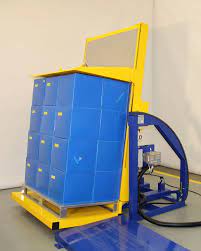
You might be thinking that all pallet changers are the same, or maybe you've tried one that didn't work out. I understand that skepticism. From my years on the factory floor and now designing these systems, I can tell you that the needs of a steel mill are unique. The immense weight, the abrasive surfaces, and the need for absolute reliability are completely different from other industries. Let’s dig into why standard solutions often fail and what you, as a steel mill owner, should really look for in a machine.
Why Do Traditional Pallet Changers Struggle with Steel Pallets and Heavy Loads?
You've likely considered or even tried using a standard pallet changer in your facility. The story is often the same: it either can't handle the sheer weight of your steel products, or it breaks down constantly. The clamping system might be too aggressive, leaving marks and dents on your finished steel. Or, the machine's frame and motor just aren't built for the relentless, 24/7 pace of a steel operation. It's a common problem I've seen many times. This downtime is more than an inconvenience; it's a direct hit to your productivity and profits. Every minute a machine is offline, your logistics chain gets clogged, costs add up, and your team's frustration grows. You invested in a solution that has unfortunately become just another problem to manage, another piece of aging equipment that can’t keep up. The core issue is that these machines were never engineered for your world. They were built for lighter, more forgiving loads. To solve this, you need a machine that was designed from the ground up for the specific challenges of handling heavy, dense steel.
Traditional pallet changers fail with heavy steel loads because they are fundamentally under-engineered for the task. They lack the structural strength to handle weights over 2000 kg consistently, and their standard clamping systems can damage the steel's surface. The motors and drivetrains are not designed for the high torque and continuous use required in a steel mill, which leads to frequent mechanical failures and costly downtime.
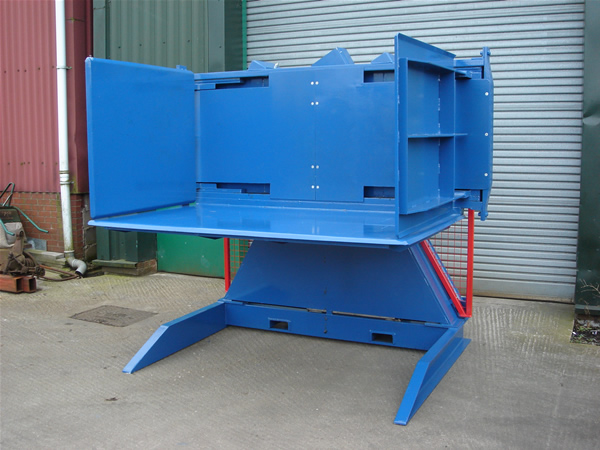
A Deeper Look at Mechanical Failure Points
When I consult with clients, especially those in demanding industries like steel, we go beyond the sales brochure. We have to talk about the physics and engineering behind the machine. I once worked with a plant manager who bought a generic pallet inverter based on its stated 1,500 kg capacity. It failed within six months because the dynamic forces of rotating a concentrated load were far greater than the machine's design could handle. Here’s where standard machines fall short.
Structural Integrity and Load Capacity
The most obvious point of failure is the frame itself. A standard machine might be built with 6mm or 8mm steel plates. For a machine that needs to handle 2-ton or 3-ton steel coils day after day, that is simply not enough. The stress on the welds and frame during the rotation cycle is immense. A machine for a steel mill needs a much more robust structure. This means thicker steel plates (10mm or more), extensive reinforcement gussets at key stress points, and high-quality welding. It's the difference between a tool for occasional use and a piece of industrial infrastructure built for a 15+ year service life. This directly addresses the challenge of aging equipment by ensuring the new investment is built to last from day one.
The Problem with Clamping Systems
This is often the most critical, yet overlooked, aspect. A pallet of consumer goods can be clamped with significant force without issue. A stack of polished steel sheets or a banded steel coil cannot. Standard pallet changers often use a simple, high-pressure hydraulic system. This can easily create too much force, causing dents, scratches, or warping. A machine for steel needs a precision-controlled system.
| Feature | Traditional Pallet Changer | Heavy-Duty Steel Mill Pallet Changer |
|---|---|---|
| Pressure Control | Basic on/off hydraulic system. | Infinitely adjustable hydraulic pressure with a visible gauge. |
| Clamping Surface | Flat, unforgiving steel plates. | Padded or polyurethane-coated plates to protect the product. |
| Force Distribution | Concentrated pressure on small areas. | Evenly distributed pressure across a large surface. |
| Damage Risk | Very high for metal surfaces. | Very low; designed to preserve product finish. |
Drivetrain and Components
Finally, the motor, gearbox, and chains are common failure points. A standard 3 kW motor will quickly burn out trying to rotate a 2.5-ton load. The gearbox bearings will wear prematurely, and the drive chain can stretch or snap. For a heavy-duty application, every component in the drivetrain must be oversized. This means a more powerful motor (e.g., 5.5 kW or 7.5 kW), a gearbox designed for high torque, and heavy-duty dual-chain drive systems. This robust engineering is essential to achieving the 95% uptime that a modern steel mill targets.
What Features Are Essential for a Steel Pallet Changing Machine?
So, you're ready to invest in a machine that is actually built for your needs. But when you start looking, you find the market is crowded. Every supplier will claim their machine is "heavy-duty" or "the best." It can be difficult to distinguish real engineering from clever marketing. How do you know which features truly matter and will deliver a return on your investment? Making the wrong choice is costly. You could end up with another expensive machine that doesn't solve your core issues. It won't help you reduce rust, it won't boost your efficiency, and it will just become another maintenance headache for your team. This is a step backward from your goals of reducing costs and improving reliability. To avoid this, you need a clear, non-negotiable checklist of features. By focusing on these critical elements, you can quickly filter out the inadequate options and find a machine that will be a genuine asset to your steel mill for years to come.
A pallet changing machine for a steel mill must have several essential features. These include a certified high load capacity (minimum 2000 kg), a finely adjustable clamping pressure system to prevent product damage, and a heavy-duty frame built with thick steel. For operational efficiency, it needs PLC controls for automation and extended side walls or guards to safely secure heavy, and sometimes unstable, loads like steel coils.
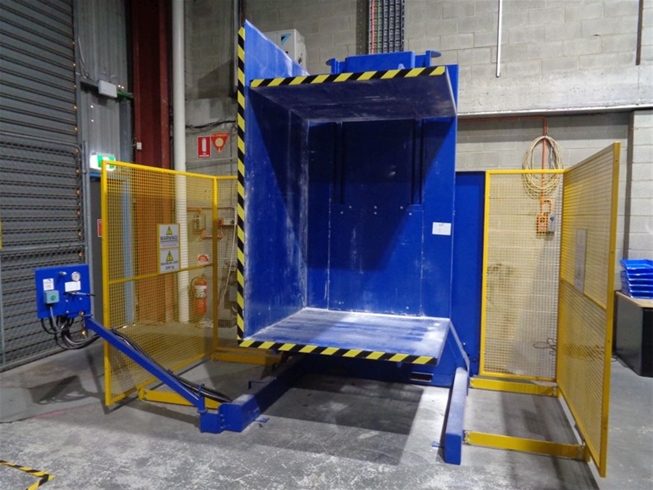
An Engineer's Checklist for a Steel Mill Machine
As an engineer who has designed these machines, I look at them from a practical, operational standpoint. It's not just about the numbers on a spec sheet. It's about how the machine will perform under pressure, day after day, in one of the toughest industrial environments. Here are the features I consider non-negotiable.
The Core Performance Features
First, let's talk about the machine's fundamental capabilities. These are the features that determine if it can even do the job safely and effectively.
- Adjustable Clamping Pressure: This is my number one priority. The machine must have a control system that allows your operator to set the exact clamping force needed for different products. A heavy coil needs a different pressure than a stack of thin sheets. A visible, easy-to-read pressure gauge is not a luxury; it's a necessity for quality control.
- Heavy-Duty Construction: I can't say this enough. Look at the machine physically or ask for detailed drawings. What is the thickness of the steel used in the frame and clamping platforms? Ask the manufacturer. It should be substantial. Quality welds and reinforcements are also critical signs of a well-built machine that can withstand years of service.
- Load Stabilization: Steel coils or unevenly stacked products can shift during rotation. A good machine will have tall, solid side walls that keep the load contained and stable throughout the 180-degree cycle. This is a critical safety feature that also prevents product damage.
Features for Modern Efficiency and Safety
Beyond the basics, a modern machine should enhance your overall operation. It needs to be efficient, safe, and ready for a connected factory environment.
| Feature Category | Essential Feature | Why It Matters for a Steel Mill |
|---|---|---|
| Automation | PLC Control System (e.g., Siemens, Allen-Bradley) | Allows for automated cycles, reduces operator error, and enables integration with other systems. |
| Integration | Conveyor Compatibility | The ability to integrate with infeed and outfeed conveyors creates a seamless, automated workflow. |
| Safety | Safety Light Curtains and Fencing | Creates a safe operating zone and protects your personnel from the powerful moving parts. |
| Usability | Remote Control or Detached Console | Allows the operator to stand at a safe distance with a clear view of the entire operation. |
Choosing a machine with these features is an investment in reliability and future-proofing. It ensures the equipment will not only meet your needs today but will also be able to grow with your operation as you continue to modernize and automate.
How Can a Pallet Changer Improve Operational Efficiency and Reduce Costs?
In a high-volume operation like a steel mill, every step in your process is a potential bottleneck. The final stage of handling and packaging is no exception. If you are manually transferring heavy steel products from one pallet to another, you know how slow and labor-intensive it is. It often requires a forklift, an overhead crane, and multiple workers, all coordinating in a high-risk maneuver. This manual process is a direct drain on your resources. You are paying for labor that could be more productively assigned elsewhere, you are increasing the risk of serious worker injuries, and you are slowing down your entire shipping department. This inefficiency works directly against your goal of lowering overall operating costs by 8% or more. The solution is to automate this critical step. By introducing the right pallet changer, you can transform this slow, dangerous, and expensive task into a fast, safe, and streamlined process. This single change can have a positive ripple effect across your entire logistics operation.
A pallet changer directly improves operational efficiency by automating the slow, manual task of transferring goods. It can reduce a process that takes two workers several minutes down to a one-person job completed in less than 60 seconds. This automation delivers significant cost reductions through lower labor needs, increased throughput, a dramatic decrease in the risk of product damage, and the ability to reuse expensive in-house pallets.
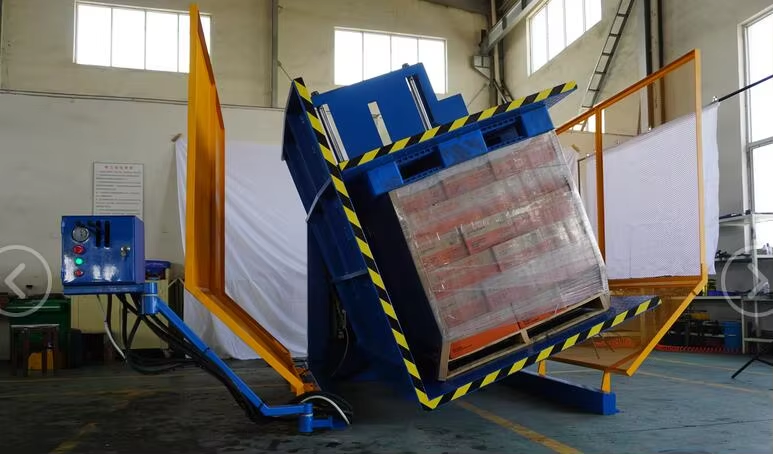
Breaking Down the Return on Investment (ROI)
When I work with business owners like you, we always focus on the numbers. An equipment purchase must be a strategic investment with a clear and measurable return. Let's look at how a pallet changer directly impacts your key financial and operational goals.
Direct and Measurable Cost Savings
The most immediate impact is on your direct costs. These are savings you will see on your balance sheet within the first year.
- Reduced Labor Costs: This is the most straightforward calculation. Let's assume a manual transfer requires two workers and a forklift operator for 5 minutes. An automated pallet changer requires one operator for 1 minute. If your blended labor cost is $30/hour, the manual cost per pallet is roughly $2.50. The automated cost is about $0.50. That's an 80% cost reduction for that specific task. When you multiply that by hundreds of pallets per day, the annual savings are substantial.
- Reduced Pallet Costs: This is a major benefit for rust prevention and cost control. You can invest in high-quality, durable steel or plastic pallets for internal use within your plant. These pallets are clean, strong, and won't introduce moisture. Just before shipping, the pallet changer transfers the product to a standard, inexpensive one-way wooden pallet. You avoid sending your valuable, high-cost pallets out the door, drastically reducing your pallet replacement budget.
Indirect Gains in Efficiency and Output
Beyond the direct savings, a pallet changer unlocks significant operational improvements.
| Metric | Before Pallet Changer (Manual) | After Pallet Changer (Automated) | Impact on Your Goals |
|---|---|---|---|
| Throughput Capacity | 10-12 pallets per hour | 40-50 pallets per hour | Helps achieve 95% capacity utilization by removing a key bottleneck. |
| Product Damage Rate | Can be high due to manual handling | Near zero due to secure, controlled movement | Increases profit margin and customer satisfaction. |
| Worker Safety | High risk of back injuries, strains | Minimal risk, ergonomic operation | Reduces insurance costs and lost time from injuries. |
| Floor Space Usage | Requires large area for maneuvering | Compact, defined footprint | Frees up valuable floor space for other operations. |
By automating this process, you are not just buying a machine. You are buying speed, safety, and reliability. You are creating a more efficient flow that allows you to ship more product with the same or fewer resources, directly contributing to your goal of lowering overall operational costs.
What's My Take on Integrating Pallet Changers into a Digitalized Steel Mill?
You are clearly a forward-thinking leader, investing in digitalization with MES, IoT, and data analytics to create a truly smart factory. This is the future of manufacturing. However, a common challenge is the "island of automation"—a piece of equipment that works well on its own but doesn't communicate with your central factory systems. A standalone pallet changer can easily become one of these islands, creating a frustrating blind spot in your data stream. This gap is significant. It means your smart factory isn't operating with complete information. You can't seamlessly track a product through its final packaging and handling stages. Your inventory data in the WMS (Warehouse Management System) is delayed until someone manually enters it, and your powerful MES is missing critical data points. This disconnect undermines the very purpose of your digitalization efforts. The solution is to view a pallet changer not as a simple mechanical device, but as a critical data node in your network. By ensuring from the start that it can integrate and communicate, you close that data gap and achieve the end-to-end production visibility you're working towards.
My take is that a pallet changer must be a fully integrated component of a digitalized steel mill. It is no longer just a machine; it's an intelligent asset. It must be equipped with a modern PLC capable of communicating with your MES and WMS via standard protocols like Profinet or OPC-UA. This integration enables real-time product tracking, automated work order execution from the MES, and the collection of valuable operational data for predictive maintenance, perfectly aligning with Industry 4.0 principles.
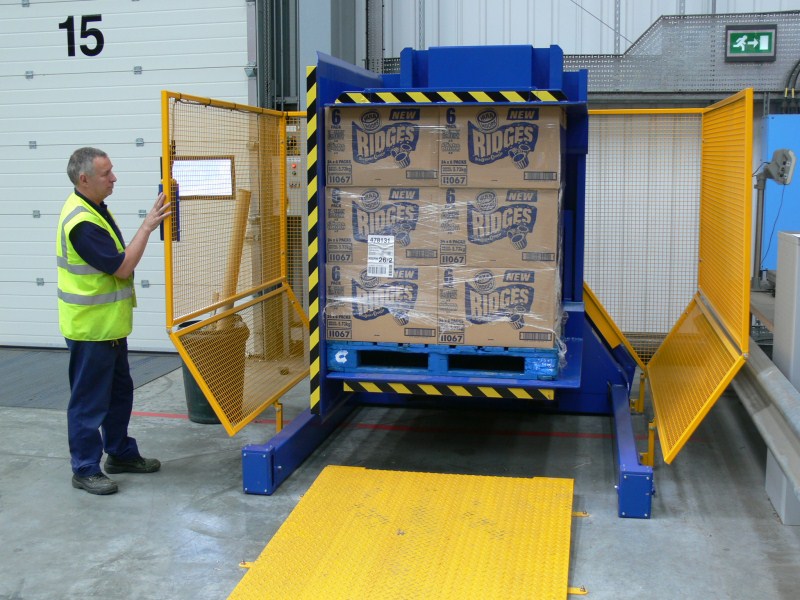
Transforming a Machine into a Data Source
This is a topic I am very passionate about because it connects my background as a hands-on engineer with the incredible potential of modern manufacturing. For a leader focused on data-driven decisions, this is where the true value lies. A machine is no longer just about performing a physical task; it's about providing the information that allows you to perform that task more intelligently.
From Reactive to Predictive Maintenance
A "smart" pallet changer does more than just turn things over. When equipped with the right sensors and connected to your network, it becomes a source of valuable operational data. It can track motor current, count the number of cycles, log operating hours, and monitor hydraulic pressure. This data can be fed directly into your maintenance platform. Instead of waiting for a machine to fail—a classic problem with aging equipment—your system can generate a work order proactively. Imagine getting an alert: "Pallet Changer #2 has completed 9,950 cycles. Schedule routine bearing inspection." This is the core of predictive maintenance. It allows you to schedule downtime on your terms and is a powerful tool for achieving your goal of 95% equipment uptime.
Closing the Loop with MES and WMS
Let's walk through a typical integrated workflow in a smart factory:
- A forklift places a pallet of finished steel sheets at the infeed of the pallet changer line.
- A barcode or RFID scanner automatically reads the pallet's unique ID.
- The pallet changer's PLC sends this ID to the MES, essentially asking, "I have this product. What should I do with it?"
- The MES checks the work order and responds: "This is for Customer XYZ. Transfer the product to a 1200x1000mm heat-treated shipping pallet."
- The pallet changer executes the task automatically.
- Upon completion, it sends a confirmation message back to the MES and WMS: "Task complete. Product ID is now associated with Shipping Pallet ID. Location is now the outbound staging lane."
This seamless, automated data exchange is the foundation of a digitalized operation. It eliminates human error from manual data entry, provides real-time inventory accuracy, and gives you complete visibility of your entire production process, from the furnace to the shipping dock.
| Feature | Standalone "Dumb" Machine | Integrated "Smart" Machine |
|---|---|---|
| Data Flow | Manual, delayed, and error-prone. | Real-time, automated, and accurate. |
| Maintenance Strategy | Reactive (fix when it breaks). | Predictive (fix before it breaks). |
| Process Control | Relies entirely on the operator. | Driven by MES work orders. |
| Factory Visibility | A "black hole" in your process data. | A fully transparent and tracked step. |
For a steel mill looking to lower costs, boost efficiency, and embrace digitalization, choosing a pallet changer that is ready for this level of integration is not just an option; it is an absolute requirement.
Conclusion
A robust, smart pallet changer is more than a machine; it's a strategic tool for quality, efficiency, and digitalization in modern steel manufacturing.




